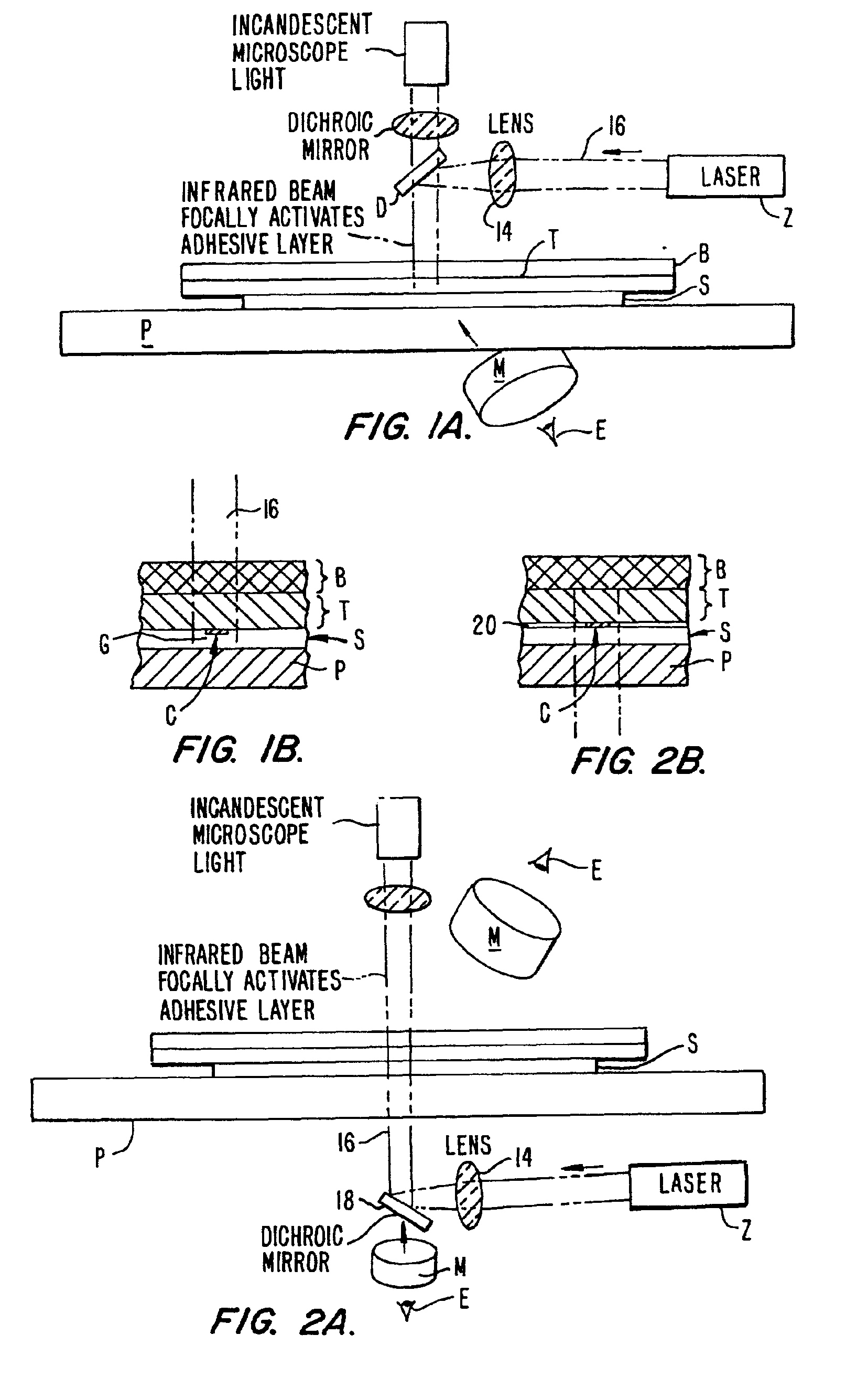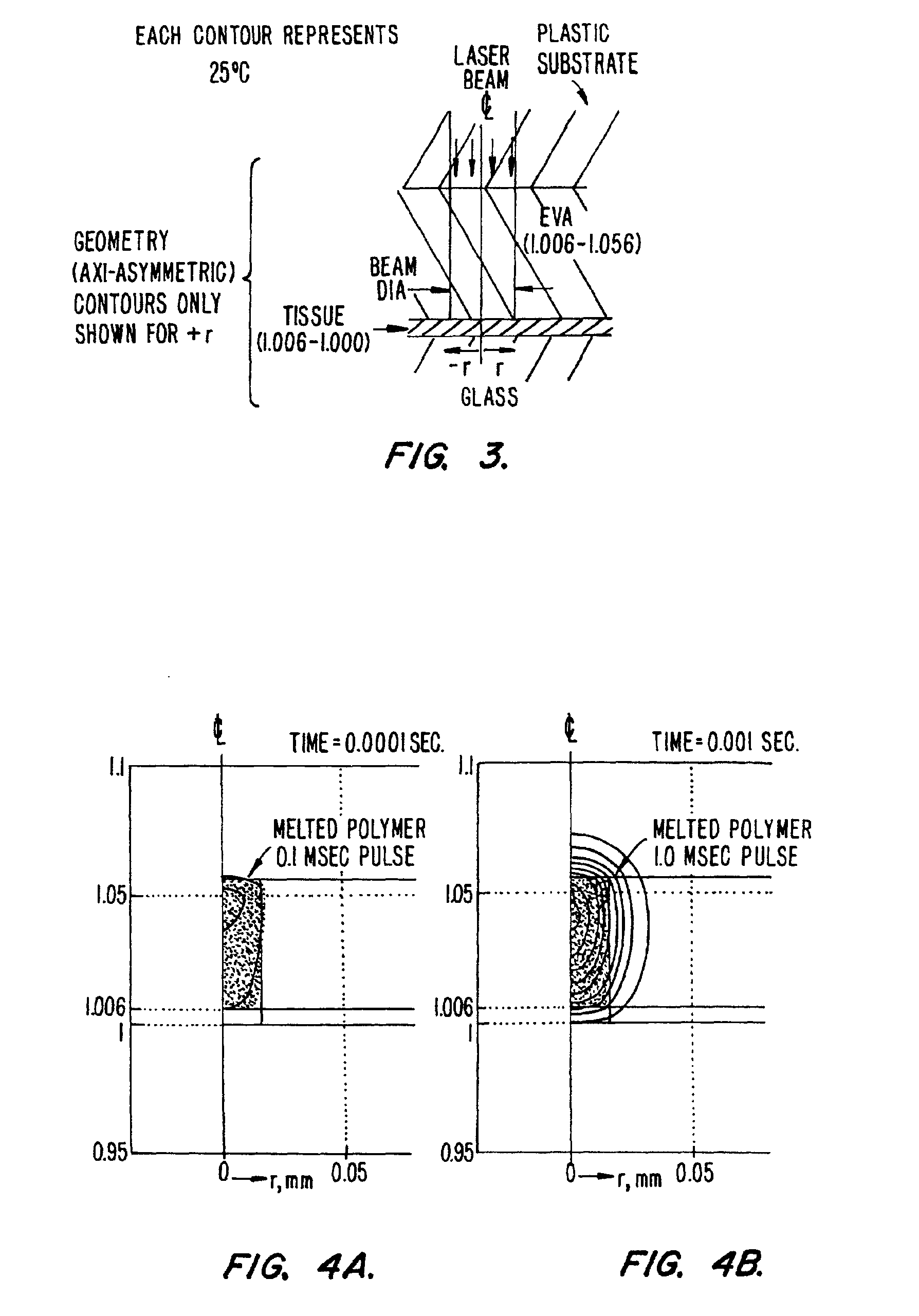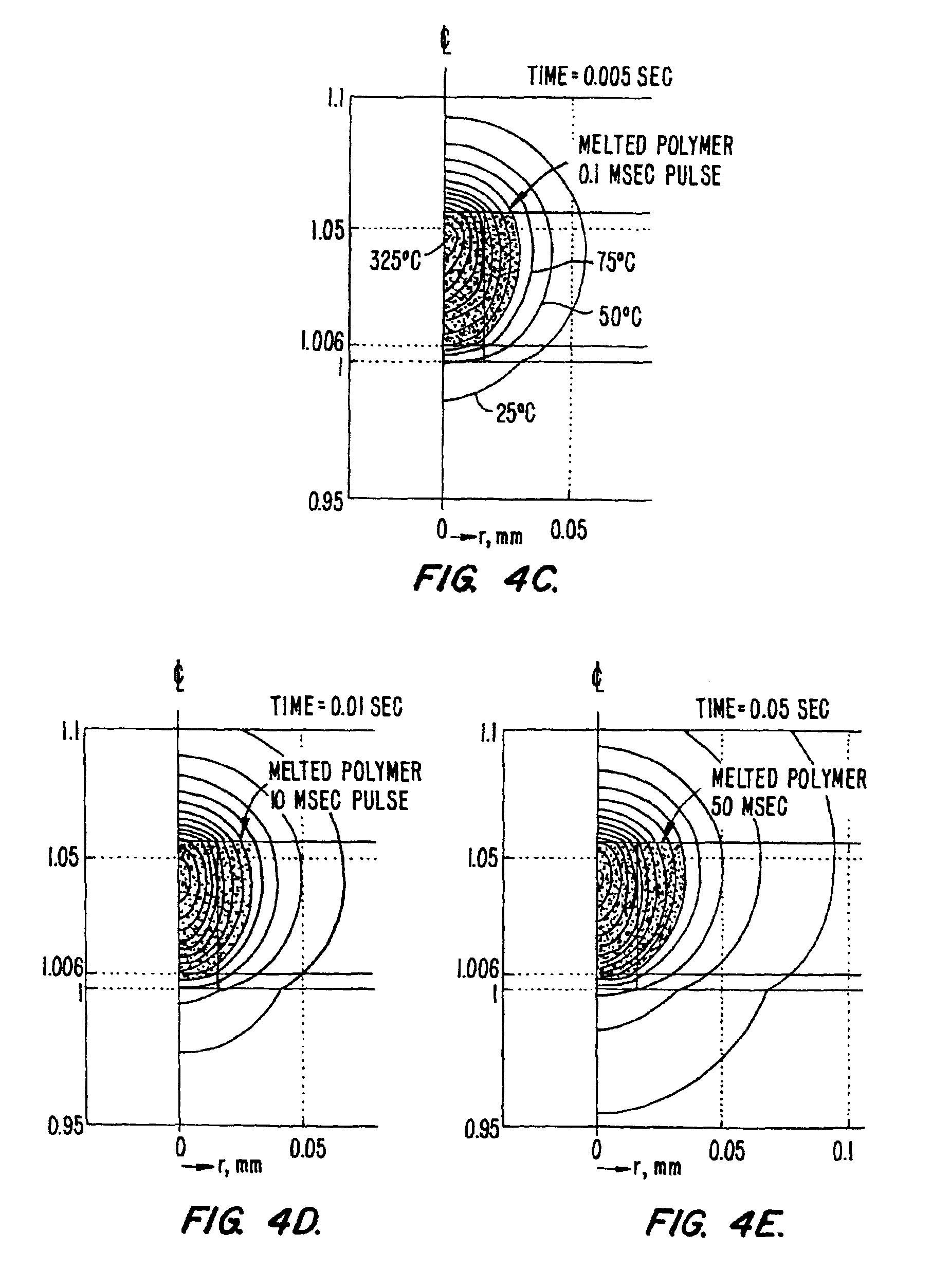Method of laser capture microdissection from a sample utilizing short pulse length
- Summary
- Abstract
- Description
- Claims
- Application Information
AI Technical Summary
Benefits of technology
Problems solved by technology
Method used
Image
Examples
embodiment
Preferred Embodiment
[0041]We use any of the existing LCM samples or films with any viewing or irradiation geometry [e.g., condenser side irradiation or epi-irradiation]. The combination of 1) short, small beam pulses, 2) the large fractional expansion on melting of the selected polymers (e.g., ˜10%) , and 3) the confinement of the expansion and redirection towards the target allow reliable capture of targets smaller than 10 μm. For longer pulses (as in the original CO2 case) the polymer could expand upwards as well as down and would flow by gravity of surface tension once the melted polymer made contact with the tissue (porous target). We require shorter laser pulses at somewhat higher powers than in conventional LCM in order to confine the melted volume of the attached polymer to small beam diameters (<20 microns). For these shorter pulses we require a high local pressure to force the rapid flow of polymer into the target (whether initially in contact or not). The large expansion o...
PUM
| Property | Measurement | Unit |
|---|---|---|
| Size | aaaaa | aaaaa |
| Size | aaaaa | aaaaa |
| Time | aaaaa | aaaaa |
Abstract
Description
Claims
Application Information
 Login to View More
Login to View More - R&D
- Intellectual Property
- Life Sciences
- Materials
- Tech Scout
- Unparalleled Data Quality
- Higher Quality Content
- 60% Fewer Hallucinations
Browse by: Latest US Patents, China's latest patents, Technical Efficacy Thesaurus, Application Domain, Technology Topic, Popular Technical Reports.
© 2025 PatSnap. All rights reserved.Legal|Privacy policy|Modern Slavery Act Transparency Statement|Sitemap|About US| Contact US: help@patsnap.com



